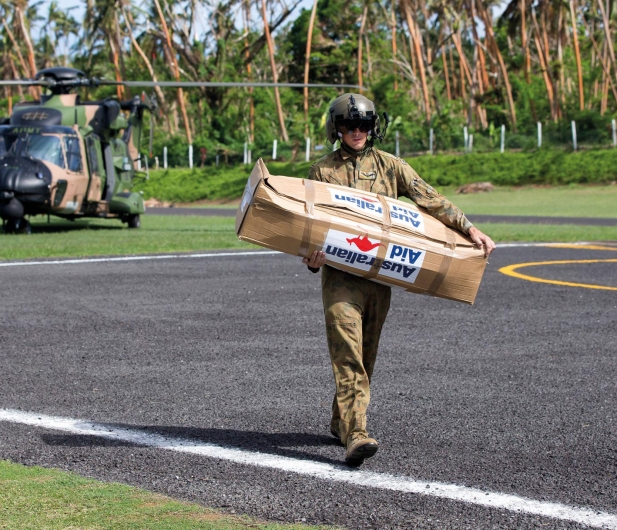After a four and a half hour flight from Hobart and two and a half hour bus trip, Jason Roberts arrived at the Antarctic Circle for the first time. He was so cold he thought he was going to die. Two days later he was out in the snow in a t-shirt and now 10 years later, Jason, Senior Research Scientist at the Australian Antarctic Division, is about to embark on his eighth visit to Antarctica.

Dr Jason Roberts. Image credit: Nathan Fulton/DFAT
A Tasmanian ‘local lad’, Jason grew up riding his BMX on the paddocks which became the site of his future workplace: the Australian Antarctic Division, which leads the Australian Government’s scientific program in Antarctica. Jason always had a love of science and, encouraged by his teachers to pursue what he enjoyed, studied mechanical engineering at the University of Hobart. He completed a PhD on catamarans and their propulsion systems before taking ‘a bit of a strange jump’ to start studying ice. ‘I saw that one of the biggest science challenges for the world…was what’s happening in Antarctica’, he says.
Science is the currency of the Treaty. It is how nations demonstrate that they are serious about Antarctica…
For one project, which requires him to drill ice cores, Jason lives in a tent, hundreds of kilometres away from the nearest building. The ice cores hold details about the rainfall history of the eastern seaboard of Australia, ‘so we can see how common droughts are over the last century in a longer timescale’, Jason says.
He also works on the highly collaborative ICECAP project with researchers from eight other countries including the US, China, France, Korea and Norway. Jason and his colleagues survey ice sheets as well as the bedrock beneath. For this work, Jason flies over the eastern Antarctic in a modified aircraft from 1942, which he describes as ‘something out of an Indiana Jones movie’. The research aims to answer questions about how the ice may change in the future and what the impacts will be. Several findings from the ICECAP project have already changed scientific thinking on Antarctica.
Jason’s work supports Australia’s role in the Antarctic Treaty, which puts in place principles for the governance of the region. Australia was one of 12 original parties to the Antarctic Treaty and is committed to the Treaty’s strength and effectiveness. ‘Science is the currency of the Treaty. It is how nations demonstrate that they are serious about Antarctica’, Jason says.

Dr Jason Roberts with frozen ice cores. Image credit: Nathan Fulton/DFAT
Jason believes that the work he is doing could make a big difference for Australia, especially for ‘decisions about water security, water infrastructure, doing sensible planning and mitigation for potential risks associated with that’.
He describes his work in Antarctica as a privilege. ‘It is a spectacular place and you get to meet and collaborate with some truly wonderful people’, he says. ‘It is one of the few places on earth where everyone from all nations are genuinely collaborative.’ Despite this, one of Jason’s favourite things is to visit the wharf near Casey Station at 2am. ‘It’s the quiet, it's the isolation, it's hearing the penguins having a bit of a chat or it's actually listening to the ice.’




